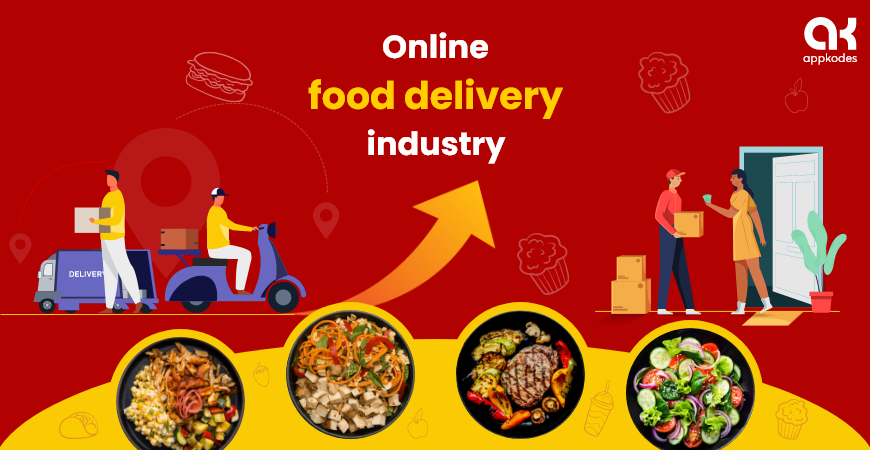If you’re a founder or decision-maker in the on-demand industry, one of the most critical choices you’ll make early on is how to build your food delivery app. For many, working with a food delivery app development company is a logical first step. But beyond choosing the right partner, there’s a bigger conversation happening around how apps are developed—and more startups are leaning heavily toward cross-platform development.
This shift isn’t just a tech trend. It’s a smart, budget-conscious, growth-oriented decision that’s helping startups go live faster, iterate quicker, and expand without draining their bank accounts.
As a company like Appkodes has seen firsthand, cross-platform development is a game-changer, especially for early-stage food delivery ventures.
1. What is Cross-Platform Development, Really?
Let’s simplify this: cross-platform development allows you to build one app that runs on both iOS and Android using a single codebase.
Frameworks like Flutter, React Native, and Xamarin make this possible. You don’t need two separate teams writing the same app twice for different platforms. Instead, your developers write once, and the app works everywhere.
Key Advantages:
-
Shared codebase = faster development cycles
-
Lower development costs
-
Easier maintenance and bug fixing
-
Simultaneous release on multiple platforms
For fast-moving startups, this is like getting two products for the price (and time) of one.
2. Why Food Delivery Startups Love It
Food delivery startups often operate under tight timelines and tighter budgets. The market is competitive and fast-moving, so speed and agility are everything. Cross-platform development aligns perfectly with this reality.
Let’s break it down:
Reduced Initial Investment
Instead of hiring two separate teams for Android and iOS, startups can work with one core team, significantly lowering early-stage costs.
Faster Go-to-Market
With a single codebase, the app can be launched on both platforms almost simultaneously—saving months of time.
Easier Updates & Maintenance
Bug fixes or feature updates don’t have to be made twice. Push one update, and it reflects across platforms.
Wider Reach from Day One
Launching on both platforms means you don’t leave half your market waiting. That’s especially important for food delivery apps trying to build critical early traction.
3. From MVP to Full-Scale App—Without Rebuilding
A huge mistake early founders make is investing in a low-cost MVP, then needing to rebuild it from scratch for scalability. But when you use modern cross-platform tools from day one, your MVP can grow with your business.
With a partner like Appkodes, startups don’t just get an MVP—they get a modular, scalable architecture that supports growth. You can start lean but expand without overhauling everything.
This is especially relevant for food delivery app development, where new features (like wallet integration, live order tracking, or promo systems) become critical as you scale.
4. Don’t Sacrifice User Experience
There’s a common myth that cross-platform apps offer a “watered-down” experience. That may have been true years ago, but with modern frameworks like Flutter, it’s outdated thinking.
You can now achieve:
-
Native-like performance with smooth animations
-
Platform-specific design elements that users expect
-
Real-time functionality like live delivery tracking, push notifications, and more
Good design and smart coding mean your users won’t even notice it’s cross-platform. And let’s be honest—they care about speed and reliability, not how the code is written.
5. Tech Teams Love It Too
From a development point of view, cross-platform apps are easier to manage. One source of truth, one repository, one team. Whether you’re maintaining the app in-house or working with a food delivery app development company, this simplifies everything.
Your tech lead isn’t juggling Android vs. iOS bugs. Your roadmap isn’t blocked by staggered timelines. Everything just runs smoother.
And when you do scale your team, you’re hiring one stack—not two.
6. When Should You Choose Native Over Cross-Platform?
Cross-platform isn’t always the answer. If your food delivery app has very device-specific requirements, such as deep camera integrations, AR features, or high-performance gaming elements, native might still be better.
But for 90% of food delivery startups, cross-platform gives you all the functionality you need—with the added bonus of cost savings, speed, and maintainability.
Final Thoughts: Build Smarter, Not Just Faster
In 2025, food delivery startups aren’t just building apps—they’re building businesses. Choosing the right food delivery app development strategy means balancing performance, cost, time, and flexibility. And cross-platform development hits the sweet spot for most founders.
Companies like Appkodes help startups take advantage of this approach with pre-built food delivery solutions that are fully customizable, modular, and cross-platform ready. You don’t just get an app—you get a launchpad for long-term growth.
So, if you’re mapping out your go-to-market plan and wondering how to build fast without cutting corners, it’s time to seriously consider cross-platform development. It’s not just a shortcut—it’s the new standard for smart, scalable app success.
